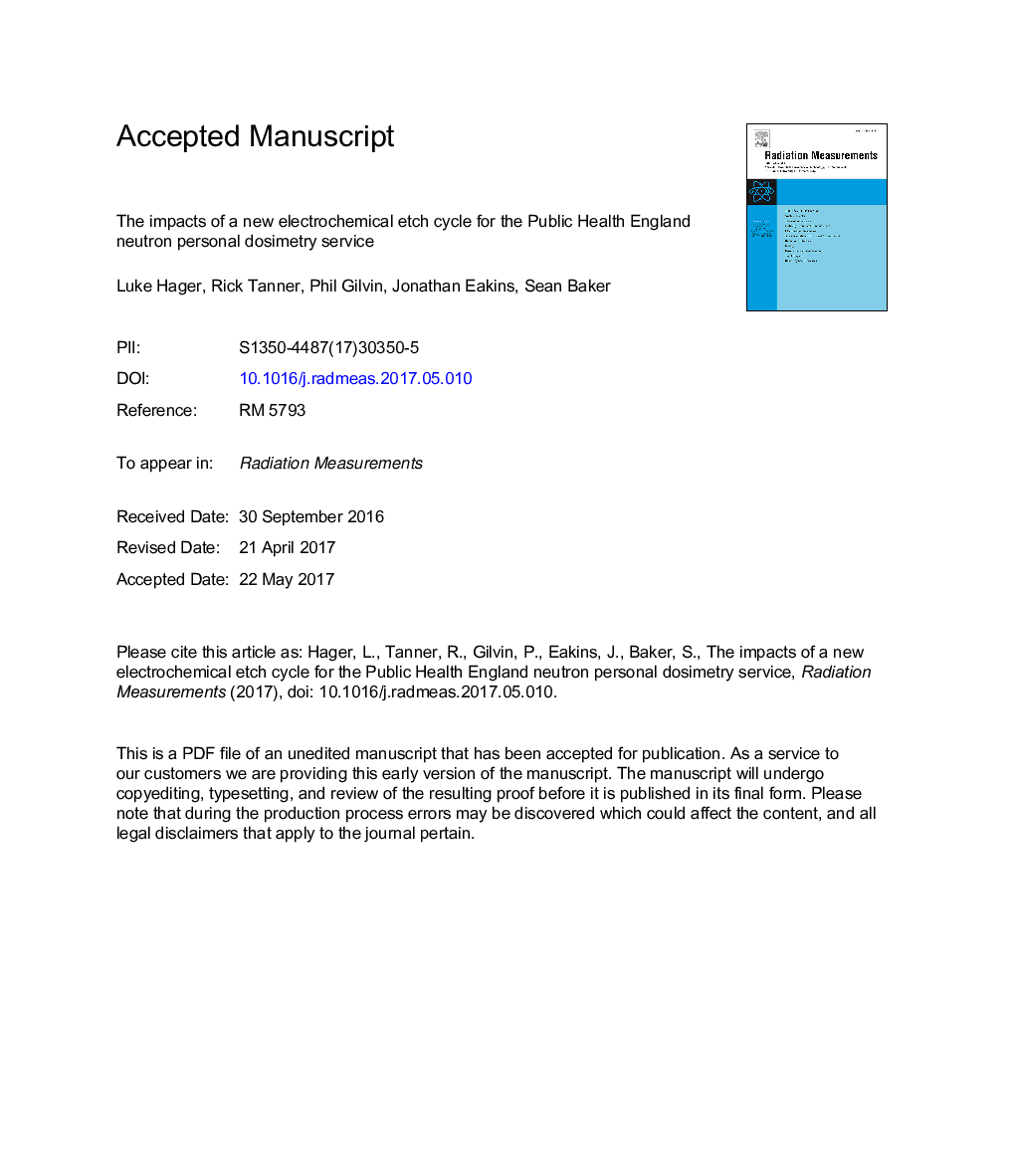| Article ID | Journal | Published Year | Pages | File Type |
|---|---|---|---|---|
| 8250318 | Radiation Measurements | 2017 | 10 Pages |
Abstract
The Public Health England (PHE) neutron and radon personal dosimetry services based on electrochemical etching of PADC have been running since 1986. Changes to the detector material have required a new etch cycle to be developed to improve linearity at high doses: A new supplier of PADC was able to meet the stringent criteria for thickness, response and background, but it was found that the tracks were, on average, larger, resulting in increased track overlap, saturation of the signal at lower dose levels and a reduction in the maximum dose measurable. This dose linearity problem meant that a more severe correction was needed, which led to increased measurement uncertainty. A new etch cycle has reduced the mean track size, and reduced track overlap, meaning that the maximum reportable dose is increased and dose assessments at higher doses are more reliable. Also reported on here are the results of tests on the energy and angle dependences of response, and the performance of the dosemeter in workplace fields, with data compared from dosemeters etched with both the old and the new processes. The results show that the new etch cycle produces an improvement to the routine service.
Related Topics
Physical Sciences and Engineering
Physics and Astronomy
Radiation
Authors
Luke Hager, Rick Tanner, Phil Gilvin, Jonathan Eakins, Sean Baker,
